Tomato Hornworms
Tomato hornworms attacking your garden? Believe me, I’ve been there! Tomato hornworms are probably the biggest pest a person will ever encounter in their garden. This year, the hornworms were more active than usual. So I thought I would share some basic (and some interesting) info about hornworms.
For instance…did you know there are two types?
There is the tomato hornworm and the tobacco hornworm. Both are very similar in appearance and both have voracious appetites. The tomato hornworm is generally found in northern locations while the tobacco hornworm is found in the southern regions. What most people here in Texas call a tomato hornworm is actually a tobacco hornworm.
How can you tell the difference?
It’s probably easier to tell you how much alike they are. They’re both the perfect shade of green, which helps them hide among the leaves so easily. Both hornworms love to destroy the same plants. And they can both overwinter in your garden to emerge in the spring as the huge Hawk moth or Sphinx moth.
The big tell-tale sign between a tomato hornworm and a tobacco hornworm, are the markings on it’s side. And the second difference is the color of their “horn”…which is really a tail. I don’t recall too many critters that have a horn on their rump…well, only one really. But hey…different strokes.
The true tomato hornworm has v-shaped, black and yellow-ish markings. Where as the tobacco hornworm has black and white slashes or “hash marks” running down its side. And as I just mentioned, different colors for the horn…black for the tomato hornworm. Red for the tobacco hornworm.
Can you see the difference below?
This is a tomato hornworm…notice it’s v-shaped markings and black tipped “horn”.
This is a tobacco hornworm…white/black hash marks and red tail.
How big do Tomato hornworms get?
Both hornworms can reach full maturity in about 3-4 weeks after hatching. If not spotted and removed before then, they can grow up to 4 inches in length and be as big around as your finger. And let me tell ya, even when you think you’re prepared…seeing one that big is still a shock.
What is the life cycle of a tomato hornworm?
The adult female moth will mate and then lay her eggs on the underneath side of a leaf in early spring. The eggs are light green and blend in well with the leaf. So you really have to look close to find them. These eggs will hatch within a week and the baby hornworms begin their life of destruction almost immediately.
If they live to maturity, around 3-4 weeks later, they’ll simply drop off the plant, burrow into the soil and gradually turn into a pupae. Consistent, warm soil can produce an adult moth as soon as two weeks later. Cold weather will usually ensure the pupae stays in the soil until spring. Only then will it emerge as an adult moth.
And then the vicious cycle starts all over again!
Here’s a comforting thought…if the weather (soil) stays warm long enough, there could be two or three generations of hornworms born in a single gardening season. Ohhhh snap!
Now…consider the fact that the female Hawk moth can lay up to 200 eggs and we’re talking potential tomato armaggedon!
What do tomato hornworms eat?
For the most part, both tomato and tobacco hornworms love tomato plants. During the course of my research, I couldn’t find a real reason why they prefer the top of the plant. But I can only assume it’s because that’s where the tenderest, freshest parts are.
And it’s pretty easy to determine where the hornworms were hatched because that’s generally where they start their feeding frenzy as soon as they’re born.
Their preference for tender, young leaves isn’t limited to tomato plants either. They’ve been know to demolish potato, pepper, eggplant and of course, tobacco plants. If their lifecycle stays constant, they’ll feed until late summer and even early fall. Again, vigilance is a must in order to save your garden.
Are tomato hornworms dangerous?
Only to your plants! Because the eggs hatch after only a week, you need to be vigilant in patrolling your garden regularly. Because of their coloring, they’re experts in the art of disguise! You most likely will see their damage long before you see them! And they can defoliate a plant in nothing flat if you’re not watchful.
If you’re having trouble spotting the little boogers, look for their droppings. They’re usually green or black and look like tiny pellets. I know some folks who wait until after dark to go looking for them. Aside from the fact that they’re more active at night, hornworms glow when you shine a light on them!
Should I kill a tomato hornworm?
Knowing their lifecycle and the damage they can do, I’m not inclined to let the little beasties live. My tomatoes have priority. But that’s up to you.
Do hornworms really turn into moths?
Yes, they do…BIG ONES! Considering the size of the hornworm when it reaches maturity, nothing but a big moth could come from it!
Here is what the pupae look like once they’ve dropped off the plant and burrowed into the soil…
And this is what it looks like when it emerges as an adult moth…
Don’t let this photo fool you. The adult Hawk moth can have a wing span of up to 5 inches. In this picture, you can see it’s feeding on nectar. For this reason, it’s also called a Hummingbird Moth. Yeah…three names…not confusing at all!
They truly are awesome to behold so I can understand anyone’s hesitation to destroy one. If you don’t fancy being in a position to make that decision, then your best bet is prevention.
How do I control tomato hornworms?
I hate to say it but unless you’re real good at spotting the eggs as soon as they’re laid, you will most likely have to deal with them eventually. However, I’m a big fan of doing things the natural way so my first suggestion would be to bring in beneficial insects that either feed on or kill the eggs before they’re hatched.
Ladybugs and Lacewings will feast on the eggs. Also, Paper Wasp like to feed on different kinds of caterpillars. So if any hornworms do survive long enough to hatch, the Paper Wasp will take care of them.
The Braconid Wasp is a good insect to have in your corner when it comes to hornworms. And they’re a little more masochistic than other critters. It will actually lay its eggs on a live hornworm. The wasp eggs look like grains of rice attached to the hornworm. The wasp larvae feed on the hornworm until they hatch. Then its lights out for our little green eating machine.
If you find a hornworm like this, don’t kill it! Simply move it to another location where you won’t mind the damage. The emerging wasp babies will become the army you need to get the rest of those hornworms under control.
I hate using chemicals in my garden. And I don’t encourage anyone else to either. I have a strong opinion that the earth has been poisoned enough without me or my generation (or future generations) making it worse!
Okay…coming down off my soapbox. (LOL)
If attracting beneficial insects in the form of wasps and ladybugs didn’t do the trick at preventing hornworms, you have other options for getting rid of them that don’t involve using chemicals.
What are some options for getting rid of tomato hornworms?
What I normally reach for when it comes to garden pests is Diatomaceous Earth (DE). It’s all natural and safe for humans and animals…as long as you’re not intentionally inhaling it. Plus, you don’t have to wait days to harvest after using it. The only downside to DE is that it has to be re-applied after a rain. The hornworms must crawl through the dust in order for it to be effective. So that means covering both sides of the leaves as well. I like using this duster applicator. It makes applying DE to the underside of leaves a whole lot easier.
Insecticidal soap has been shown to work on the younger hornworms. You can make a homemade version using just water and a few drops of dish soap. Spray it liberally…it must touch the young caterpillars in order to be effective.
Lastly, and the best method for most folks, is simply picking them off by hand and dropping them into a bucket of soapy water. Or you could feed them to your chickens. I know, picking by hand sounds gross. I strongly advise wearing gloves if you do.
I’m not a squeamish person but pulling hornworms off of a plant just gives me the willies! On occasion, a hornworm will resist and get’s squeezed to death in the process. I know…gross again. But it’s a fact of life, my friend…get used to it!
Also, the experts will tell you that they don’t bite…but I’ve heard stories to the contrary. I wear gloves simply so I don’t have to have physical contact with them. The choice is yours.
Any preventative options for controlling hornworms that don’t involve touching them or dealing with other insects?
Yep….grow herbs! I’m talking about dill, basil and marigold. Plant them all around your tomato plants. They’re all good companion plants and will usually prevent an invasion of the female moth due to their aroma. So you want to plant lots of it! Never fear…these herbs will do more than just be a forward guard for tomato plants.
Dill can do double duty in pickle recipes and potato salad. Basil has a hundred uses but if you’ve ever wanted to try pesto, this will be a great time to do so. Marigolds may be good at keeping the critters away from your tomatoes but they’re also pretty! And they make you smile!
Another option is to till the dirt before spring planting and after fall harvest. The hornworm pupae will burrow into the soil only a couple of inches which is well within reach of a destructive tiller blade. Research shows that tilling in spring and fall prevents around 90% of hornworm infestation.
This year, we are going to experiment with soil solarization.
The process involves covering the garden with clear plastic and letting the heat from the sun basically cook the soil. This in turn will kill all the critters living in the soil, including hornworm pupae. Unfortunately, it will also kill the good critters as well. We’ll amend the soil to lure beneficials back to the garden after the process is complete. We are already in the habit of adding compost every year because it helps alleviate some of the issues we have with our sandy soil. This won’t be any additional hardship.
Finally, keep the garden clean and free of debris. This gives the female moth fewer places to lay her eggs. And I would suggest applying some sort of preventative, like DE, as soon as the plants are established and growing well. In case the arrival of the female moth catches you off guard, her options for a safe egg deposit will be limited.
It’s nothing personal against hornworms…it’s just…well, yeah it’s personal. Not sorry! Have you ever dealt with hornworms in your garden? What worked for you? Please, take a minute to leave a note in the comments below. I’d love to hear about it!
Until next time,
lisa
LisasSimpleLife is a participant in the Amazon Services LLC Associates Program, an affiliate advertising program designed to provide a means for sites to earn advertising fees by advertising and linking to Amazon.com.
[/vc_column_text][/vc_column][/vc_row]
If you like what you see, click on the subscribe button so you don’t miss anything!
I promise not to spam you! By clicking the subscribe button, you agree to my privacy policy.


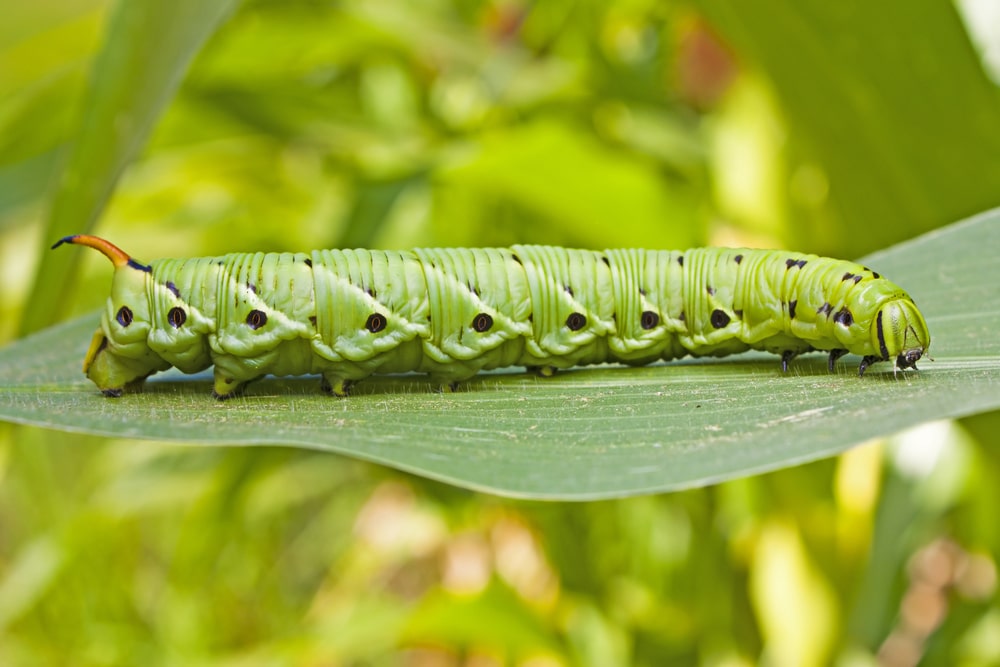
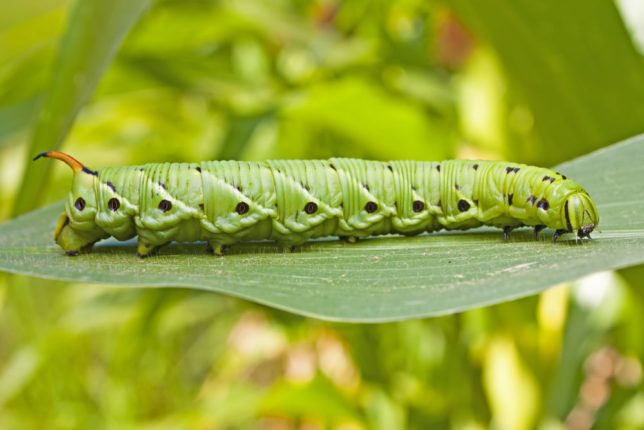
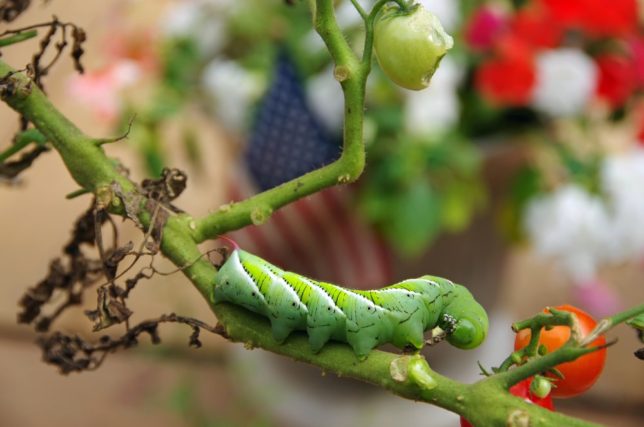
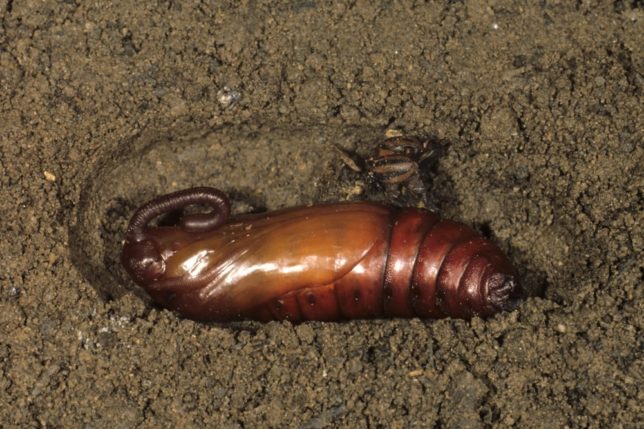

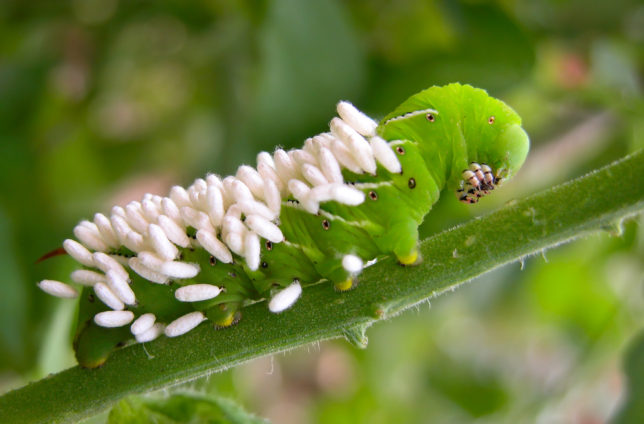






Fascinating article on tomato hornworms. I had no idea about the wasp larvae. I learned something new about caring for my tomatoes! Great article!
Hey Andrea! I’m glad you found a little nugget of info that you didn’t have before. Comments like yours make it all worthwhile!